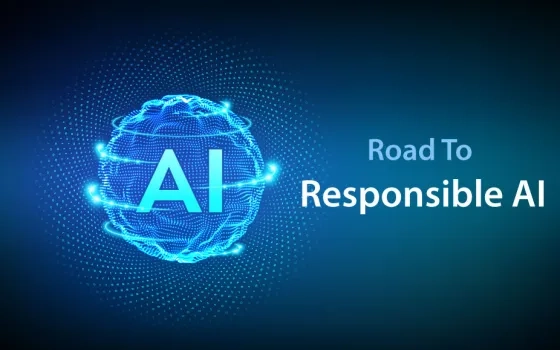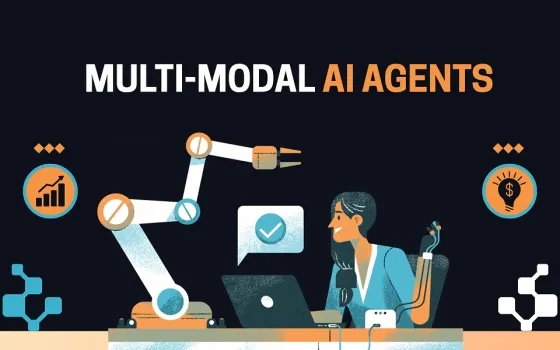Introduction
Artificial intelligence or AI isn’t something new to us. We are surrounded by AI everywhere, from google personalized ads to messenger bots. We have seen movies where everything is automated and machine-driven. Right now, we don’t reside in a world like that, but we’re getting there. Future technologies such as artificial intelligence (AI) are pushing in the direction of an automated world. We all realize that AI is getting smarter each day. Almost every industry is adopting AI today. Hence, we need to know about artificial intelligence applications that are impacting the world in distinctive ways.
Developers mostly work on 3 parts of AI.
-
MACHINE LEARNING(AI)
-
DEEP LEARNING(DL)
-
REINFORCEMENT LEARNING(RL)

-
MACHINE LEARNING(AI)
The basic part of AI is machine learning. ML is the learning of machine. Machine learning(ML) is when a machine is learning. Imagine how a kid identifies a canine? We display him as an animal and say this is a canine. The next time when he sees a canine, he identifies that animal as a canine. The same goes for ML. We display our program a few examples of what we need it to identify, the program learns from the examples and evolves. Let’s say we are programming a canine recognization system. We have to feed the program some examples of canine. The program will learn from the examples and make itself a better version day by day. This process is machine learning.
2.DEEP LEARNING (DL)
Deep learning algorithms can be regarded both as a complicated and mathematically complex evolution of machine learning algorithms. The deep learning algorithm doesn’t need a software engineer to pick out the capabilities but is capable of automatic feature engineering through its neural network.

Deep learning requires plenty of data than a traditional machine learning algorithm to function properly. ML works with a thousand data points, deep learning oftentimes only with millions. Due to the complex multi-layer structure, a deep learning system needs a large data set to eliminate fluctuations and make high-quality interpretations.
Algorithms can decide on their own (without the intervention of an engineer) whether a prediction is accurate or not. Think for example of providing an algorithm with thousands of videos and images of cats and dogs. It can look at whether the animal has whiskers, paws, or a furry tail, and use learnings to predict whether new data fed into the system is more likely to be a cat or a dog.
3.REINFORCEMENT LEARNING(RL)
Reinforcement Learning(RL) is a sort of machine learning technique that permits an agent to learn in an interactive environment via trial and error using feedback from its own actions and experiences. This is the most interesting topic about AI. When AI comes to hardware and controls a mechanical thing like a car or a robot, that is called Reinforcement Learning. Reinforcement Learning is portrayed as a ML method that is related to how software agents should take actions in an environment. Reinforcement Learning is a fragment of the deep learning method that helps you to maximize some portion of the cumulative reward.
It is also about taking accurate action to maximize reward in a particular situation.
What organizations are doing today
We have seen films where everything is automated and machine-driven. Right now, we don’t stay in a world like that, but we’re getting there. Future technologies like artificial intelligence (AI) are pushing us toward an automated world. Almost every industry is adopting AI today. Irrespective of the size, tech organizations are working on various artificial intelligence applications that will transform the future of industries such as banking, education, finance, healthcare, and so on. There are many AI applications that we use every day, but we are unaware of them. Undoubtedly, they are making our lives easier. These are the significant industries that can be benefited from AI applications in the near future.
1. Healthcare
2. Retail and E-commerce
3. Banking and Financial Services
4. Logistics and Transportation
5. Entertainment and Gaming
6. Manufacturing
Tools
With the increase in the number of organizations that are adopting AI technologies into their business, the number of tools for professionals who work in this field of AI has also increased. some of the top tools used in Artificial Intelligence are:
-
TENSORFLOW
TensorFlow is an end-to-end open-source platform for ML. This tool is developed by Google and it is used for numerical computation intelligence. TensorFlow does computation by making use of data flow diagrams.
TensorFlow library is accessible for everyone therefore it is one of the best libraries. TensorFlow is available in many programming languages like Python, C++, Java, etc., and is now used by many major companies such as Dropbox, eBay, Intel, Twitter, etc. Google uses TensorFlow in Google products such as Gmail, Photo and Google search engine.
-
KERAS
Keras is written in Python language and has been designed to simplify the creation of Deep Learning models. The Keras can run on top of other libraries such as TensorFlow, Theano, etc.
Keras can be made use of if you need a Deep Library that allows easy and fast prototyping supports both convolutional and recurrent networks and runs seamlessly on both CPU and GPU.
-
SCIKIT LEARN
Scikit Learn is one of the popular Machine Learning libraries. Scikit Learn is an open-source library written in Python, and it features many ML models including classification, regression, clustering, and dimensionality reduction.
Scikit Learn is designed on three open-source projects which include Matplotlib, NumPy, and SciPy, and it focuses on data mining and data analysis.
-
MICROSOFT COGNITIVE TOOLKIT
Microsoft Cognitive Toolkit is an open-source library that could help you to take your ML project to the next level.
Microsoft Cognitive Toolkit can be included in your Python, C# or C++ programs. Microsoft Cognitive Toolkit is also used as a standalone Machine Learning tool. Microsoft is using this tool for some of its products like Skype, Bing. etc.
-
CAFFE
Caffe (Convolutional Architecture for Fast Feature Embedding) is a Deep Learning tool that is framed by Berkeley AI Research and by community contributors. Caffe is an open-source framework written in C++. It comes with a Python interface and focuses on speed, modularity, and expressiveness.
6. TORCH
Torch is an open-source Machine Learning library. Toech is a scientific computing framework with wide support of ML algorithms that puts GPUs first.
Torch is used by many leading companies such as Facebook, Google, Twitter, Nvidia and many more.
7. MXNET
MxNet is a Deep Learning library that is accessible with multiple programming languages including C++, Python and R. It can be used to work on both CPU and GPU.
MxNet has been built to work along with dynamic cloud infrastructure. The main user of MxNet is Amazon.
Responsible AI is challenging to address
AI is one of the important things to hit the technology industry (and many other industries) in the coming years. But simply because it holds enormous potential does not mean it does not any have challenges. And AI challenges and possibilities are not small, that is why recognizing and working towards resolutions to problems can help further propel AI growth.
COMPUTING POWER
The tech industry has undergone computing power challenges in the past years. But, computing power is necessary to process massive volumes of data to build an AI system, and using techniques like deep learning, is unlike any other computing power challenge that has been previously faced in the tech industry.
INTEGRATING AI
Seamlessly transitioning to AI is more compels than adding plugins to a website or creating a Visual Basic for Applications (VBA) enhanced Excel Workbook. One must make certain that the current programs are compatible with AI requirements, and that AI is implemented into these programs without stopping current output. The AI interface needs to be build in a way that data storage,infrastructure and data input are considered and that the output is not adversely affected. Additionally, once this is completed, make sure that all personnel are trained on the new system.
COLLECTING AND UTILIZING RELEVANT DATA
For an organization to effectively put into effect AI strategies and programs, it should have a base set of data and maintain a regular source of relevant data to ensure that AI can be beneficial in their selected industry. Data may be gathered on various applications in different formats such as text, audio, images, and videos. The wast range of platforms to collect this data adds to the challenges of AI. In order to be successful, all this data should be integrated in such a manner that the AI can understand and transform into useful results.
BIAS PROBLEM
The nature of an AI system depends on the quantity of data they are trained on. Hence, the capacity to gain good data is the answer to good AI systems in the future. But, in reality, the everyday data the organizations gather is poor and holds no significance.
They are biased, and only somehow define the nature and specifications of a limited number of people with common interests based on religion, ethnicity, gender and other racial biases. The actual change can be brought only by defining few algorithms that can efficiently track these problems.
Looking ahead: What do companies aspire to do?
AI is automating business operations today and will continue to advance the way we work. The field of AI is humongous and there is a lot to find out about AI. Only AI specialists can unlock the technology’s true potential.
AI is poised to unharness the next wave of digital disruption, and companies must prepare for it now. We already see real-life benefits for some early adopting firms, making it greater pressing for others to boost up their digital transformations. Our findings focus on five AI technology systems: robotics and autonomous vehicles, language, computer vision, virtual agents, and machine learning, which includes deep learning and underpins many recent advances in the other AI technologies.
Focal factors of the journal include, but are not limited to innovative applications of:
- Internet–of–things and cyber-physical systems
- Intelligent transportation systems & smart vehicles
- Big data analytics, understanding complex networks
- Neural networks, fuzzy systems, neuro-fuzzy systems
- Deep learning and real-world applications
- Self-organizing, emerging, or bio-inspired system
- Global optimization, Meta-heuristics and their applications: Evolutionary Algorithms, swarm intelligence, nature and biologically inspired meta-heuristics, etc.
- Architectures, algorithms and techniques for distributed AI systems, including multi-agent based control and holonic control
- Decision-support systems
Conclusion
Artificial Intelligence (AI) is playing an important role in the fourth industrial revolution and we are seeing a lot of evolution in various machine learning methodologies. In simple terms, Artificial Intelligence (AI) refers to the ability of a computer or a computer-controlled robot to perform tasks commonly associated with intelligent beings, generally humans. As a result, it depicts characteristics such as the ability to reason, discover meaning, or learn from experience.



























